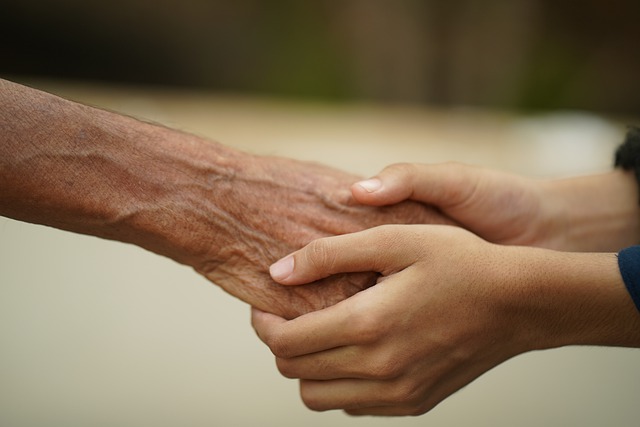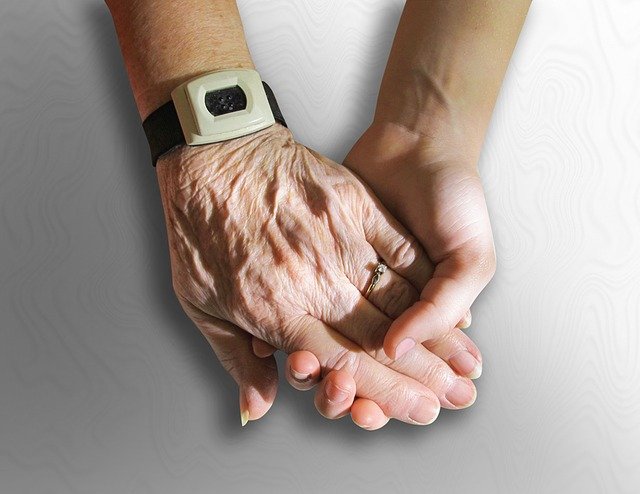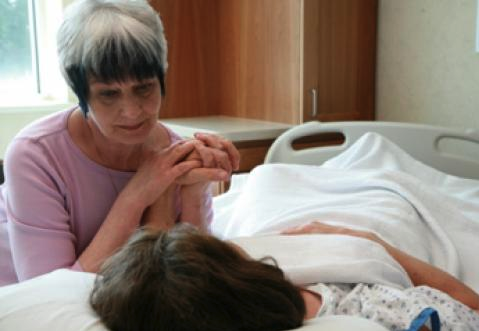
- Better Society -
- 5mins -
- 934 views
No one dies alone: How an incident in one nurse’s life kickstarted a worldwide movement
Not everyone lays on their deathbed surrounded by loved ones— which is why an Oregon nurse Sandra Clarke enlisted the help of an entire hospital (everyone from kitchen staff to gardeners) to ensure that no one dies alone.
No One Dies Alone thanks to the kindness of strangers
No one is born alone, and in a perfect world, no one should ever die alone. Yet from time to time terminally ill patients come to the end of his or her life with neither family nor close friends to be with them as they near the end of life. No One Dies Alone is a volunteer program that provides the reassuring presence of a volunteer companion to dying patients who would otherwise be alone. With the support of the nursing staff, companions are thus able to help provide patients with that most valuable of human gifts: a dignified death.



Nurses know the awe of being present at the birth or the death of another human
One rainy night, Sandra Clarke, an ICU nurse at Sacred Heart Medical Center in Eugene, Oregon had a brief encounter with a man whose name she cannot recall, but a man she will never forget. He was one of her seven patients, near death and a DNR (Do Not Resuscitate). During her initial rounds, he asked, barely audible, “Will you stay with me?” He was so frail, pale, old and tremulous. Nurse Clarke said, “Sure, as soon as I check my other patients.”
Vital signs, passing meds, chart checks; assessments and bathroom assistance for six other patients took up most of the next hour and a half. When Nurse Clarke returned he was dead. She reasoned he was a DNR, no family, very old, end-stage multi-organ disease; now he was gone, and she felt awful. It was okay for him to die, it was his time… but not alone.
Nurse Clarke looked around; scores of people were nearby providing state-of-the-art patient care. For this man, state-of-the-art should have been dignity and respect.
Since that night Nurse Clarke mentioned to peers and administrators her idea for putting together a group of volunteers made up of hospital employees who would be willing to sit with the alone and dying. Usually this was met with “Good idea,” and sometimes, “I already give this place enough of my time!”
For 16 years Sandra Clarke’s vision quest remained only conversation
“The past 14 years I have worked where No One Dies Alone – the ICU. Speaking with nurses from other ICUs, there seems to be an unwritten universal protocol for the patient who is dying without the presence of friends or family. One’s other patients’ care will be taken over by nearby nurses.” Clarke wrote in a blog.
“Rituals of passing are acted out: I’ve seen nurses quietly singing, holding the hand of the dying, and, in other manners of behaviour, showing care and respect while an individual passes on to death. Nurses know the awe of being present at the birth or the death of another human. I believe awe and privilege is an innate human response at these times — the very essence of humanity.” Continued below…
Source: how-we-die.org
Clarke’s program now operates in over 400 hospitals, hospices, and AIDS care facilities worldwide
The medical community has begun to focus on the need for specialised end-of-life care. Nurse Clarke’s place of work, Sacred Heart Medical Center, has been proactive and innovative on this front. They have unit-based ethics resource teams in ICU and oncology. These teams are made up of staff nurses who teach, review patient care and assist other staff with complex ethical concerns that surface. They have protocols for palliative care and comfort care. They have music thanatologists on staff that play music for dying individuals.
In this climate, during casual conversation with another nurse, the Center’s spiritual care director, Bob Scheri, overheard Nurse Clarke talking about her old idea for employee volunteers who would attend the alone and dying. Bob asked her to write a proposal, which he took to Sacred Heart’s corporate headquarters and was granted approval for the program. No One Dies Alone has been up and running at Sacred Heart since November 2001.
“What is satisfying for me is that my original plan, formed only in my mind, is essentially intact.”
The program has become part of the standard of end-of-life care at Sacred Heart.
A staff nurse generally initiates a No One Dies Alone vigil for a patient by contacting the NODA vigil coordinator who then calls NODA program volunteers, the “compassionate companions” to sit at the bedside of patients who are in their final hours and without family, friends or loved ones.
Since the NODA program began, Sacred Heart has an average of 1-2 vigils per month for patients who have outlived their family members, or have alienated themselves from friends and family through lifestyle choices, or have had a catastrophic event while passing through Eugene. My goal is that not one of these persons will die alone.
The reasons individuals volunteer for NODA are varied and fascinating. Hospital staff including carpenters, administrative heads, maintenance workers, nurses, secretaries, and kitchen workers have all come forward. Some who come from large families cannot imagine someone being alone; others are alone themselves. One nurse from the cardiac cath lab has seen many die in spite of the high tech environment and care. He wanted to experience once again “why I became a nurse in the first place — to care for those who can no longer care for themselves.”
Sandra Clarke says, “I am not an especially pious person. I do have a strong belief in human rights, particularly when a person is most vulnerable. No One Dies Alone has been a profound professional and spiritual experience. It gives both job satisfaction and a raison d’etre. It is a plan, which could be readily implemented in any hospital and in time, it may be true that No One Dies Alone.”
